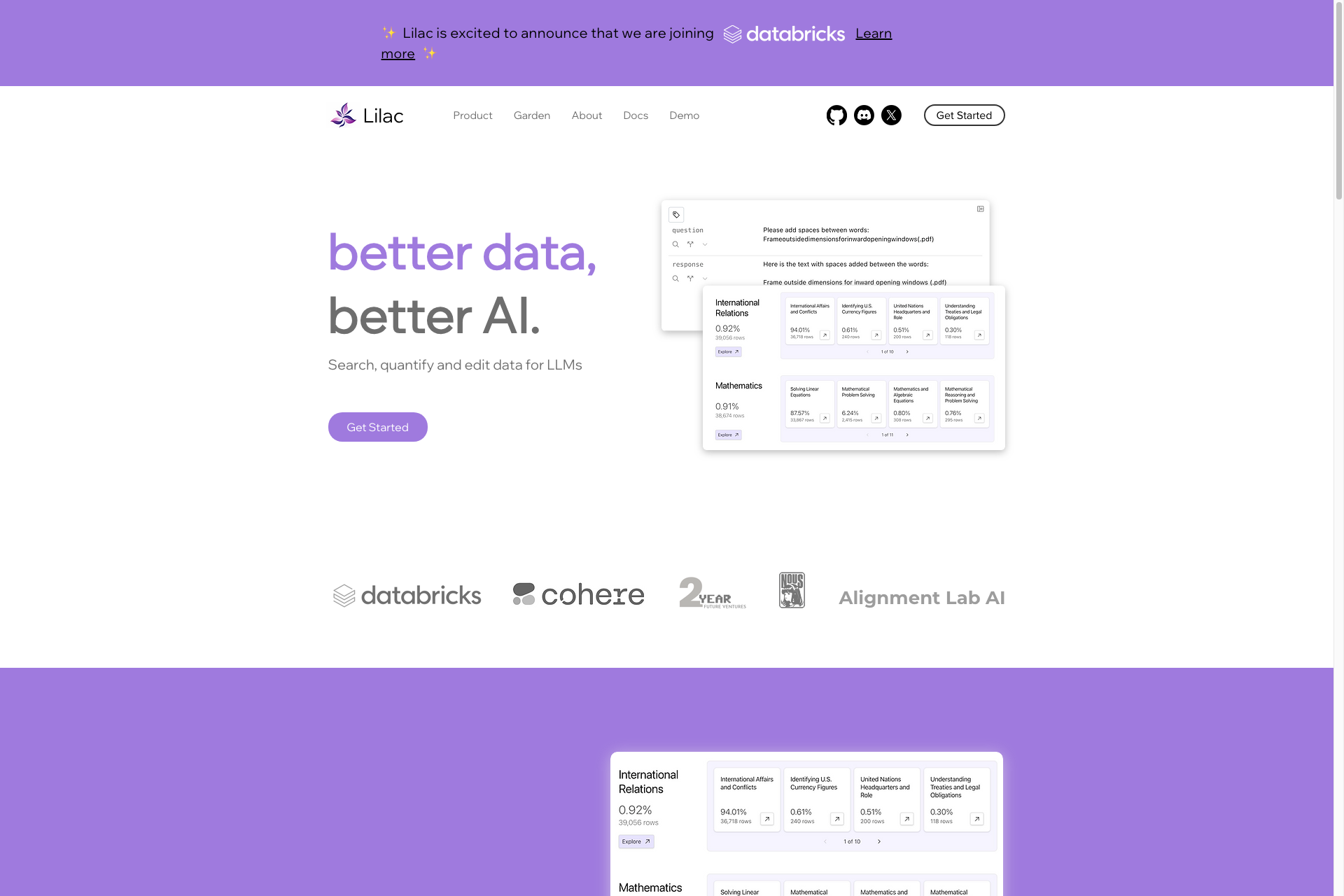Lilac
Lilac is an open-source tool that enables data and AI practitioners improve their products by improving their data.

Related Products about Lilac

Smart Summarizr, powered by Chat-GPT-4, revolutionizes article summarization. Instantly condense lengthy articles into concise summaries. Enhance your productivity and comprehension with Smart Summarizr!"

peopleCQ enables you to build your online hiring presence in seconds. The AI helps you create your hiring portal, JDs, analyze and assess incoming resumes, compare applicants and zoom-in on the perfect candidate.

SmartVisuals.app is an AI-powered infographic generation tool that allows you to create infographics effortlessly. No design skills required! Prompt a topic and let the magic happen 🪄

FanCraft by Yodo1 empowers app and game developers to automate review responses, run engaging live events, manage Discord communities, and reward players. Boost your game's growth by improving ratings, enhancing user engagement, and cross-promoting your games.

Digital immortality is now possible – but it starts with getting data out of brains & into cloud storage. Our AI biographer draws out your loved ones’ memories & maps their persona to create a record of life stories & wisdom that families can access forever.

Pixar Person allows you to upload an image of yourself and turn you into a Pixar inspired character.

At Leonardo Labs, we're building Advanced AI Video Personalities for Business. From Customer Service Reps to AI Twins for content creation, we create AI assistants that reduce the friction of running an online business.
